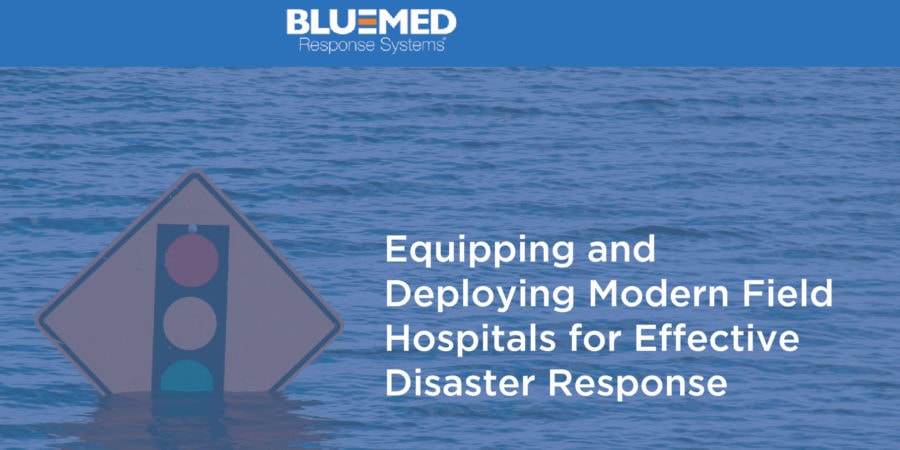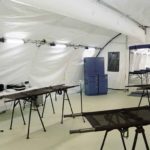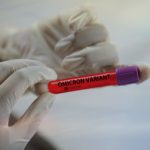Equipping Modern Field Hospitals for Effective Disaster Response
Field hospitals play a critically important role in disaster response, from natural calamities like floods or hurricanes to violent conflicts. These facilities are the primary drivers for reducing the human life consequences of disaster and helping survivors recover more quickly.
Ample equipment and staffing of field hospitals is key to their ability to provide the necessary speed, level of treatment, and treatment capability to save as many lives as possible.
General Questions About Field Hospitals
How Are Field Hospitals Classified?
Field hospitals are mobile medical facilities that offer rapid implementation and (if necessary) expansion of healthcare. Generally, these facilities are self-sufficient and self-contained and used for emergency situations over a specified period of time.
A few different variables affect how a field hospital is classified. Field hospital classification ranges from levels 1 to 4, which are based on the following considerations:
- Proximity
- Medical staff quota
- Supplies and equipment (types and availability)
- Surgical complexity
- Specialty services (surgical or ancillary)
The Geneva Convention forbids conflicting parties from attacking any people or buildings that display a Red Cross or Red Crescent emblem. Any such attack is a war crime. As a result, field hospitals normally display clear markings.
How Are Field Hospitals Deployed?
The level of response and deployment of field hospitals after a disaster or military conflict depends on:
- The established nature of the event (or events)
- The caliber of the disaster’s impact
- The notoriety of the event with donors and the public (media coverage has a significant impact on donations to relief agencies)
Governments, response agencies, and aid organizations usually work together to facilitate the deployment of field hospitals and provide humanitarian aid and disaster relief. Typically, the host country conducts the initial analysis of need. Depending on expertise and available resources, other organizations may perform additional analyses if necessary. Initial considerations for determining health needs include:
- Deciding whether need or supply should drive the response
- Prioritizing victim groups for response focus
- Planning a staged response or deploying a single large effort
- Weighing the consequences of delays from additional needs assessments
All these considerations will determine the specifics of how best to deploy and equip the field hospitals for the most effective disaster response.
[Related: The Importance of Deployable Morgues for Disaster Sites]
Equipping Modern Field Hospitals
According to the World Health Organization (WHO), a field hospital providing medical services following a disaster needs to:
- Be operational within 24 hours of the event.
- Have sufficient services and resources to meet immediate medical needs.
- Utilize technology that national health personnel can operate.
Additionally, all field hospitals used for disaster response will need to have some key additional attributes.
Field Hospital Security
The protection of patients and hospital staff is top priority. Nevertheless, field hospitals in conflict areas often lack the staff and equipment necessary to provide elevated security.
Hospitals must be highly stable. Reliable facilities should be equipped with key systems to ensure uninterrupted care, such as power generators or standalone HVAC systems. Field hospital security programs must meet key security considerations, including layout, staffing, policy training, and availability of security personnel.
Sufficient field hospital security may require additional measures to protect against violent war crimes despite the Geneva Convention’s mandate. For example, the World Health Organization conducted a 2012 study in which there were reports of systematic targeting of doctors and patients in Syria. According to the reports, authorities had targeted doctors for treating injured combatants and demonstrators.
Hospitals were established underground in Syria to address this concern, hidden under buildings such as farmhouses, deserted facilities, and even mosques and churches. These field hospitals primarily served wounded civilians and combatants, but also members of the local population who were deprived of access to healthcare due to siege and military operations in the area.
Equipping modern field hospitals with the necessary security to protect patients and staff from violence may require additional manpower. This may include military aid, private assistance, or a combination.
Sufficient Access to Necessary Resources
Speed is only one of the vital aspects of disaster response. Additionally, solid preparedness plans and the inclusion or allocation of ample resources can make a response effort optimally effective or catastrophically deficient. Each field hospital should be deployed and maintained with the medical personnel, specialists, staff, equipment, medicine, and general facilities to support sufficient disaster response requirements.
The 2012 WHO study (referenced earlier) found that only about 50% of field hospitals in conflict zones of Syria were fully functioning. Although some hospitals were damaged during combat, the primary reason was due to lack of sufficient equipment, staff, and medicine.
Disaster response initiatives should include budget planning and an effective supply chain in order to deliver these vital resources and ensure the fulfillment of ongoing needs. Funding from governments and relief organization donations often causes budget constraints that can cripple a humanitarian supply chain, so financial support planning is a critical part of the resource planning process.
Effective Economical Logistics Planning
Logistics is the overarching term to include delivery, transportation, and distribution of relief. More specifically, this includes the deployment of a field hospital and the ongoing supply of necessary resources. Humanitarian aid and disaster relief efforts commonly struggle with logistical uncertainties. As a result, preparedness, flexibility, and in-depth planning are essential for an effective response.
Studies have estimated that around 60 to 80% of disaster response funds go toward logistics, making this area easily the most expensive aspect of disaster response. Logistics efficiency or lack thereof makes a dramatic difference in not only the cost of responding to a disaster event, but also in the aid organization’s ability to provide augmented or additional help.
When including a field hospital in the logistics of a disaster response plan, the field hospital should be capable of the following two features:
- Portability: It’s often very difficult to predict the comprehensive need for disaster victims. Nevertheless, responding quickly with portable and rapidly deployable medical facilities is a key feature to providing fast and effective support. A portable field hospital is able to easily relocate to areas of the greatest need.
- Versatility: Disasters almost never result in a single event or require the same response. As a result, each disaster and the resources needed for a successful response will always be very different. Additionally, there are usually consequential events that require additional emergency response and resources. Field hospitals need to offer a high level of versatility to provide a scaled response. Whether it is a portable field hospital on the frontlines of a conflict zone, or a 300-bed field hospital to isolate and treat a surge of patients during a pandemic, the ability to quickly scale and withstand the short and long-term environmental conditions is crucial to saving lives.
[Related: CAL EMSA Disaster Response Exercise Performed With BLU-MED Facilities]
Field Hospital Equipment From BLU-MED
Field hospitals from BLU-MED Response Systems® can be equipped with systems to create a climate-controlled field hospital for use in extreme hot, humid, or cold environments, including:
- Fuel storage solutions and Power generation systems
- Insulation
- Environmental control units (ECUs)
- Raised or modular flooring systems
- Partitions and/or privacy curtains
- Specific systems for mobile marquis, decontamination, patient isolation, and much more
BLU-MED offers field hospitals equipped with a large assortment of portable medical equipment. What’s more, these systems feature a compact design, portability, and rapid access to life-saving treatments and mobile monitoring. BLU-MED also offers an extensive list of medical, furniture, and hygiene equipment to create a self-contained and safe space to administer life-saving healthcare in any environment.
Start Preparing for Disaster Response Today
Reduce the effects of future disasters by implementing a disaster preparedness plan for your government or response agency.
As our understanding of climate change and the relationship of increased and more severe natural disasters is better known, it is becoming more important for governments, state, cities, and local response agencies to include medical facilities and portable field hospitals in their disaster plans. Having rapidly deployable medical facilities on the shelf and able to quickly respond is literally a matter of life and death after a disaster.
If your organization wants to take the first step toward disaster preparedness with a mobile field hospital, email us or leave us a message on our site.


